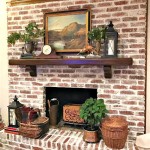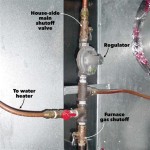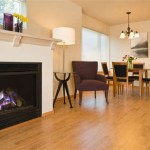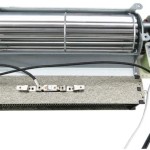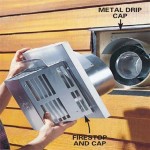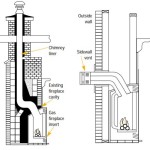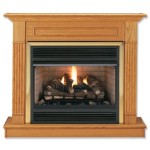Bookshelves Around Fireplace Plans: Design, Construction, and Considerations
Incorporating bookshelves around a fireplace is a classic design element that enhances both the aesthetic appeal and functionality of a living space. This architectural feature provides ample storage, displays personal collections, and creates a cozy, inviting atmosphere. Planning and executing such a project, however, requires careful consideration of various factors, including space constraints, design choices, construction techniques, and safety regulations.
Before embarking on the construction of bookshelves around a fireplace, a comprehensive plan is essential. This plan should encompass several key aspects: overall design, precise measurements, material selection, construction methodology, and compliance with building codes. A well-defined plan minimizes errors, reduces material waste, and ensures a safe and structurally sound finished product. This article will explore the critical elements involved in planning and implementing bookshelves around a fireplace, providing guidance on design considerations, construction techniques, and crucial safety measures.
Key Considerations in Bookshelf Design
The design phase is paramount to the success of any bookshelf project. The bookshelf's design must be harmoniously integrated with the existing architecture and décor of the room. Several key factors should be meticulously evaluated to achieve both aesthetic appeal and functional utility. These factors include dimensions, style, material, and the intended use of the shelves.
The dimensions of the bookshelves are directly dictated by the available space around the fireplace. Accurate measurements of the wall space extending from the fireplace are crucial. Consider the height and width limitations to ensure the bookshelves do not overwhelm the room or impede access. Furthermore, the depth of the shelves should be carefully considered. Deeper shelves can accommodate larger books and decorative items, while shallower shelves create a more streamlined appearance. It is often beneficial to create a detailed mock-up of the intended bookshelf design to visually assess its impact on the room's overall layout.
The style of the bookshelves must complement the existing architectural style of the home. Traditional homes often benefit from bookshelves with intricate moldings, raised paneling, and classic finishes. Contemporary homes, on the other hand, may be better suited to sleek, minimalist bookshelves with clean lines and modern materials. Consider the fireplace's architectural style as well. Is it a rustic stone fireplace, a modern linear gas fireplace, or a traditional brick fireplace? The bookshelf design should echo the fireplace's aesthetic to create a cohesive and harmonious design.
Material selection plays a significant role in both the appearance and the structural integrity of the bookshelves. Solid wood, such as oak, maple, or cherry, offers durability and a timeless aesthetic. However, solid wood can be more expensive and prone to warping or cracking if not properly seasoned. Plywood, particularly hardwood plywood, provides a stable and cost-effective alternative. Medium-density fiberboard (MDF) is another option, offering a smooth surface suitable for painting. Consider the overall budget and desired aesthetic when selecting the materials.
The intended use of the bookshelves will influence the design and construction. If the shelves are primarily intended for books, consider the typical size and weight of the books that will be stored. Deeper shelves may be necessary for oversized books, while adjustable shelves offer flexibility in accommodating different book sizes. If the shelves are intended for displaying decorative items, consider incorporating lighting or features that highlight the displayed objects. Integrating closed storage, such as cabinets or drawers, can also enhance the functionality of the bookshelves by providing concealed storage for less visually appealing items.
Construction Techniques and Best Practices
Once the design has been finalized, the construction phase begins. Proper construction techniques are essential to ensure the structural integrity and longevity of the bookshelves. This encompasses accurate cutting, secure joinery, and proper finishing. It's important to approach the construction methodically, paying close attention to detail at each stage.
Accurate cutting is paramount to a well-constructed bookshelf. Precise measurements should be transferred to the chosen materials using a sharp pencil or marking gauge. Utilizing power tools, such as a table saw or circular saw, allows for clean and accurate cuts. A miter saw is particularly useful for cutting angles and creating precise joints. Double-check all measurements before making any cuts to minimize errors and material waste.
Secure joinery is crucial for creating a strong and stable bookshelf. Several joinery techniques can be employed, depending on the materials and the desired aesthetic. Butt joints, while simple, are the weakest and should be reinforced with screws or dowels. Dado joints, where one piece of wood fits into a groove cut into another, provide excellent strength and stability. Mortise and tenon joints are a traditional joinery method that offers exceptional strength and a visually appealing aesthetic. Pocket-hole joinery is a popular option for DIY projects, offering a strong and relatively easy-to-implement connection. Select the joinery method that best suits your skill level and the desired aesthetic.
Proper finishing not only enhances the appearance of the bookshelves but also protects the wood from moisture and wear. Sanding the wood smooth is an essential first step. Start with a coarse grit sandpaper and gradually work your way to a finer grit to achieve a smooth, even surface. Apply a primer to seal the wood and provide a uniform base for the finish. Paint, stain, or varnish can then be applied to achieve the desired color and sheen. Multiple coats of finish are generally recommended, sanding lightly between each coat. Pay close attention to the manufacturer's instructions for the chosen finish to ensure proper application and drying times.
When building around a fireplace, ventilation and heat resistance are paramount. Leave adequate space between the back of the bookshelves and the fireplace to allow for proper airflow. Use heat-resistant materials for the shelves closest to the fireplace. Consider adding a non-combustible barrier between the fireplace and the bookshelves for added safety. Regularly inspect the bookshelves for any signs of heat damage or warping.
Safety Considerations and Building Codes
Safety is of utmost importance when constructing bookshelves around a fireplace. The proximity of the bookshelves to a heat source necessitates careful consideration of fire safety regulations and the implementation of preventative measures. Compliance with local building codes is mandatory to ensure the safety of the occupants and the structural integrity of the building.
Local building codes often dictate the permissible distance between combustible materials and the fireplace. These codes may also specify the types of materials that can be used near a fireplace. Consult with your local building department to ascertain the applicable codes and regulations before commencing construction. Obtaining the necessary permits will ensure compliance and prevent potential fines or legal issues.
Fire-resistant materials should be used in the construction of the bookshelves, particularly those closest to the fireplace. Cement boards are a good alternative, as they are non-combustible and can withstand high temperatures. Using fire-retardant paints and finishes is also advisable. Regularly inspect the bookshelves for any signs of heat damage, such as charring or warping.
Proper ventilation is crucial to prevent the buildup of heat behind the bookshelves. Leave ample space between the back of the bookshelves and the wall, and ensure that the fireplace is properly vented according to the manufacturer's instructions. Consider incorporating ventilation grilles into the bookshelf design to promote airflow. A smoke detector should be installed in the vicinity of the fireplace and bookshelves to provide early warning in the event of a fire.
Consider the weight capacity of the shelves and ensure they are adequately supported. Overloading the shelves can lead to structural failure and potential hazards. Secure the bookshelves to the wall using appropriate hardware to prevent them from tipping over. This is especially important in homes with children or pets. Regularly inspect the bookshelves for any signs of instability or damage.
Electrical considerations are also crucial. If you plan to incorporate lighting into the bookshelves, ensure that the wiring is done by a qualified electrician and complies with local electrical codes. Avoid running electrical wires behind the fireplace or near any heat sources. Use appropriate lighting fixtures that are designed for use in enclosed spaces and are resistant to heat. Regularly inspect the electrical wiring and fixtures for any signs of damage or wear.
By carefully considering these design, construction, and safety considerations, homeowners can successfully integrate bookshelves around a fireplace, creating a beautiful and functional focal point in their living space.

White Built In Bookshelves Around The Fireplace Green With Decor

Best Built In Bookshelves Around A Fireplace Design Ideas Living Room Decor Renovation Shelves

Little Updates And Fireplace Plans The Inspired Room

White Built In Bookshelves Around The Fireplace Green With Decor

Gorgeous Office Bookshelves With A Built In Electric Fireplace Twelve On Main

ᑕ❶ᑐ Fireplace Bookshelves Design Has Shiplap Set Sail
Diy Fireplace Surround And Built Ins Our Blessed Life

Reader Question How Can I Build Symmetrical Bookcases Around This Fireplace Addicted 2 Decorating

How To Build Bookshelves Around A Fireplace

Bookcase Built In Cabinets Around Fireplace Bookcases A Shallow Fire Bookshelves
Related Posts

